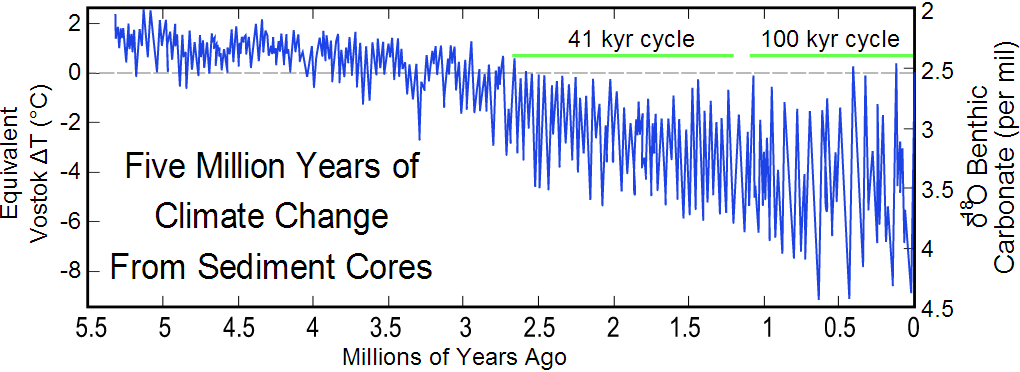
If the Earth were the only planet orbiting our Sun, the eccentricity of its orbit would not perceptibly vary even over a period of a million years. The Earth's eccentricity varies primarily due to interactions with the gravitational fields of Jupiter and Saturn. As the eccentricity of the orbit evolves, the semi-major axis of the orbital ellipse remains unchanged. From the perspective of the perturbation theory used in celestial mechanics to compute the evolution of the orbit, the semi-major axis is an adiabatic invariant. According to Kepler's third law the period of the orbit is determined by the semi-major axis. It follows that the Earth's orbital period, the length of a sidereal year, also remains unchanged as the orbit evolves. As the semi-minor axis is decreased with the eccentricity increase, the seasonal changes increase. But the mean solar irradiation for the planet changes only slightly for small eccentricity, due to Kepler's second law.
Celestial mechanics affect the length of days, years, and seasons - these vary more than most folks are aware of:
The relative increase in solar irradiation at closest approach to the Sun (perihelion) compared to the irradiation at the furthest distance (aphelion) is slightly larger than four times the eccentricity. For the current orbital eccentricity this amounts to a variation in incoming solar radiation of about 6.8%, while the current difference between perihelion and aphelion is only 3.4% (5.1 million km). Perihelion presently occurs around January 3, while aphelion is around July 4. When the orbit is at its most elliptical, the amount of solar radiation at perihelion will be about 23% more than at aphelion.
More info on these terms: analemma, axial precession, sidereal year, tropical year, anomalistic year
Is everything known about this topic, and does everyone agree? Heck no, that's the beauty part of science. It's a process, not an end in itself which is best because there are all sorts of undiscovered and unanticipated objects and phenomena out there in the great beyond. We keep refining instruments and research methods, and new discoveries are made by the boldest thinkers that improve on well developed and long tested theories. Inquiring minds can research and build on all this by "standing on the shoulders of giants" like Copernicus, Newton, Galileo, and Kepler.
_____
* FYI - the reference to "Your Father's 365.25" relates to the Julian calendar. Wiki says:
A year (Old English gēar, Gothic jēr, Runic Jēran) is the orbital period of the Earth moving around the Sun. For an observer on the Earth, this corresponds to the period it takes the Sun to complete one course throughout the zodiac along the ecliptic.
In astronomy, the Julian year is a unit of time, defined as 365.25 days of 86400 SI seconds each (no leap seconds).[1]



 RSS Feed
RSS Feed
